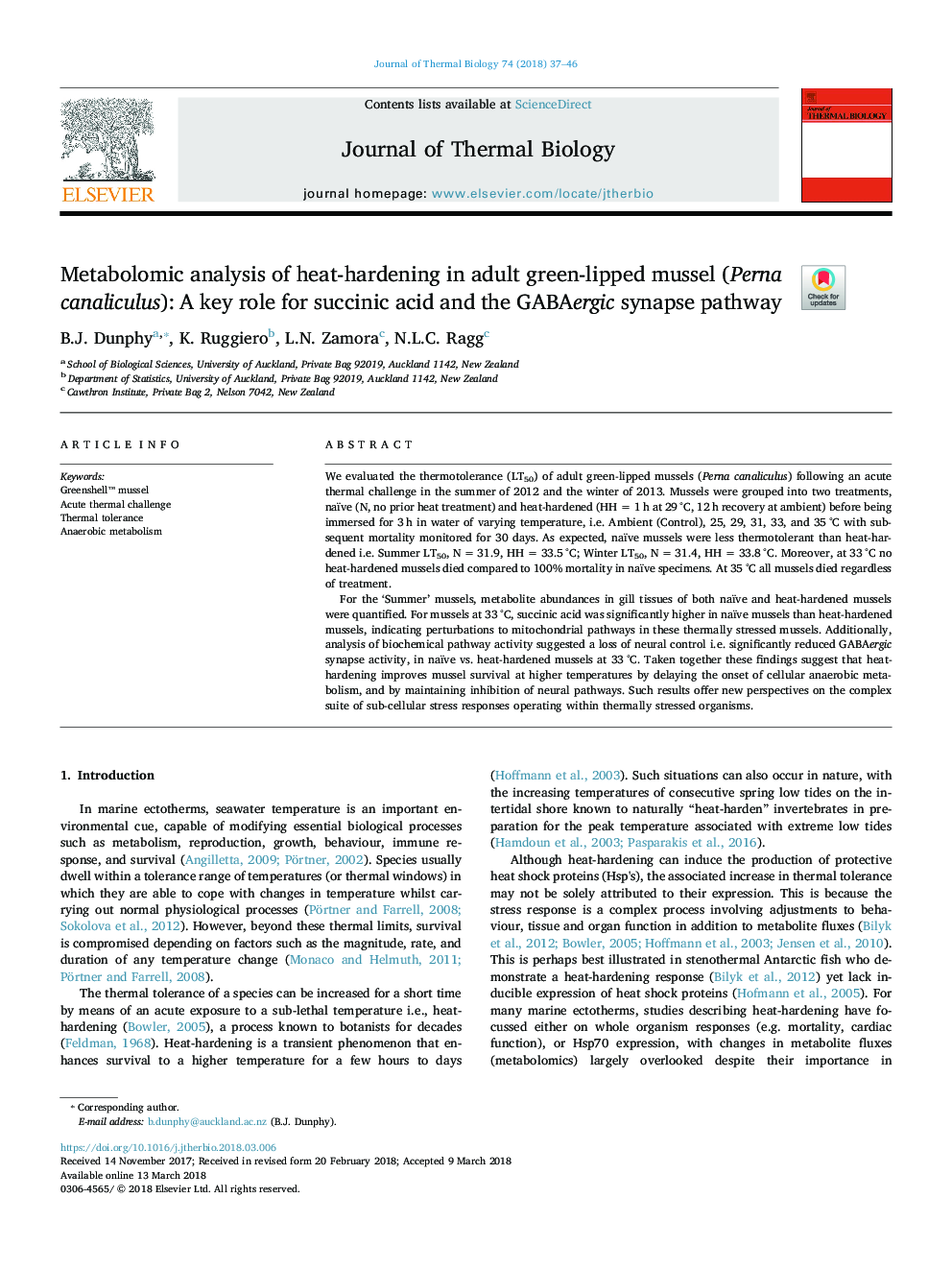| Article ID | Journal | Published Year | Pages | File Type |
|---|---|---|---|---|
| 8649998 | Journal of Thermal Biology | 2018 | 10 Pages |
Abstract
For the 'Summer' mussels, metabolite abundances in gill tissues of both naïve and heat-hardened mussels were quantified. For mussels at 33â¯Â°C, succinic acid was significantly higher in naïve mussels than heat-hardened mussels, indicating perturbations to mitochondrial pathways in these thermally stressed mussels. Additionally, analysis of biochemical pathway activity suggested a loss of neural control i.e. significantly reduced GABAergic synapse activity, in naïve vs. heat-hardened mussels at 33â¯Â°C. Taken together these findings suggest that heat-hardening improves mussel survival at higher temperatures by delaying the onset of cellular anaerobic metabolism, and by maintaining inhibition of neural pathways. Such results offer new perspectives on the complex suite of sub-cellular stress responses operating within thermally stressed organisms.
Related Topics
Life Sciences
Agricultural and Biological Sciences
Agricultural and Biological Sciences (General)
Authors
B.J. Dunphy, K. Ruggiero, L.N. Zamora, N.L.C. Ragg,
